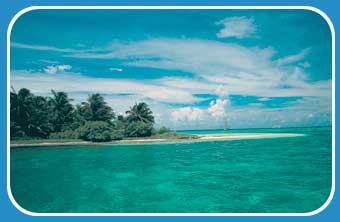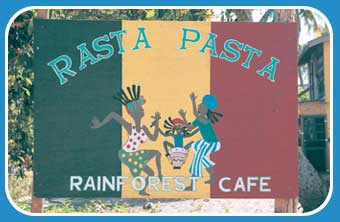| |
| With coral islands in pristine waters, ancient ruins of Mayan cities buried in jungle, and a rich, cultural diversity, Belize has plenty to offer tourists. But the growth in tourism generates new conflicts and development challenges for Belizeans. |
 ©Simon Scoones/Worldaware
©Simon Scoones/Worldaware
|
Useful Websites on Belize:
Belize Tourism Board www.belizetourism.org or www.travelbelize.org for government policy and statistics on the country's tourism industry
Protected Areas Conservation Trust www.pactbelize.org for information about Belize's protected areas. |
|
Today, about one in four jobs in Belize is tourism-related, and tourism earns a quarter of the country's foreign exchange.
 for an Excel spreadsheet showing the total number of tourists visiting Belize each year since 1996, and how they arrived. for an Excel spreadsheet showing the total number of tourists visiting Belize each year since 1996, and how they arrived.
Use the spreadsheet to construct a line graph to show the total numbers of tourists in Belize over time, and to produce a stacked column graph to show how people got there.
 if you need help. This will open a Word document that you can save or print. if you need help. This will open a Word document that you can save or print.
Describe the changing patterns over time shown on your graphs.
What events may influence the trends that you have described in the future?
The Eco-tourism Bandwagon
To prevent tourism from wrecking the country's natural resources and local ways of life for future generations, the government of Belize has made the sustainable development of its tourism industry a priority. Eco-tourism is a key component of the Belize government's plan for sustainable tourism. Often organised in small groups, eco-tourism trips aim to give tourists the opportunity to experience natural environments and traditional cultures without damaging them. But the eco-tourism bandwagon is a mixed blessing.
For more information on eco-tourism, check out:
www.ecotourism.org
www.uneptie.org/pc/tourism/ecotourism/documents.htm
for the latest on the International Year of Eco-tourism (2002) and the first World Eco-tourism Summit in Quebec, Canada in May 2002. |
|
Local Participation
For sustainable tourism, the government has recognised the importance of involving local communities. To inform and seek the views of local people, public meetings are set up before a new tourism development goes ahead. This way, local communities can take part in decision-making, and potential conflicts can be ironed out.

©Simon Scoones/Worldaware.
|
With a greater role in developing a tourist activity, local people have more incentive to preserve natural resources like caves, forests or coral reefs. |
But the Belize government is in a dilemma. The country needs money to pay for improvements in infrastructure so that the growing numbers of tourists will not cause permanent damage to the environment. Although every visitor pays a £3 (approx) conservation tax to pay for environmental management, this is not enough. The country also faces a heavy burden of overseas debt. With these financial pressures, the government has opened the door to foreign investors.
Competition from Outside
Foreign-owned tourism enterprises bring much needed investment, and provide jobs for local people. In addition, some foreign owners bring expertise in managing fragile environments to develop eco-tourism that works. But local people struggle to match overseas bids for new tourism developments. Although Belizean law guarantees a degree of local land ownership, foreigners can gain Belizean citizenship relatively easily. This provides them with a loop-hole in the law.
| As much as 90% of the restaurants and hotels along Belize's coastal strip are now in foreign hands. |

©Simon Scoones/Worldaware.
|
Land Conflicts
Resentment from local residents has come to a head over a system of caves in the foothills of the Mayan mountains, a tourist attraction that recently featured in the 'reality TV' series, "Temptation Island". Tourists can take rafts along underground rivers through caverns and tunnels, and the more adventurous can abseil 100 metres down the 'Black Hole' into a collapsed cave. Even though laws prevent individuals from owning caves in Belize, the land surrounding the caves is now private property, owned by a North American. As a result, local residents can neither visit the caves nor make money from them.
Management for the Future
Developing a tourism industry that is going to be sustainable is never easy. However, tighter planning regulations and closer scrutiny of the possible impacts of new developments before they are built may help to avoid some of the mistakes of the past, and decision-making needs to involve all the people affected. This way, there is a better chance that future generations will be able to experience the beauty of Belize and local communities can reap the benefits.
|
|





